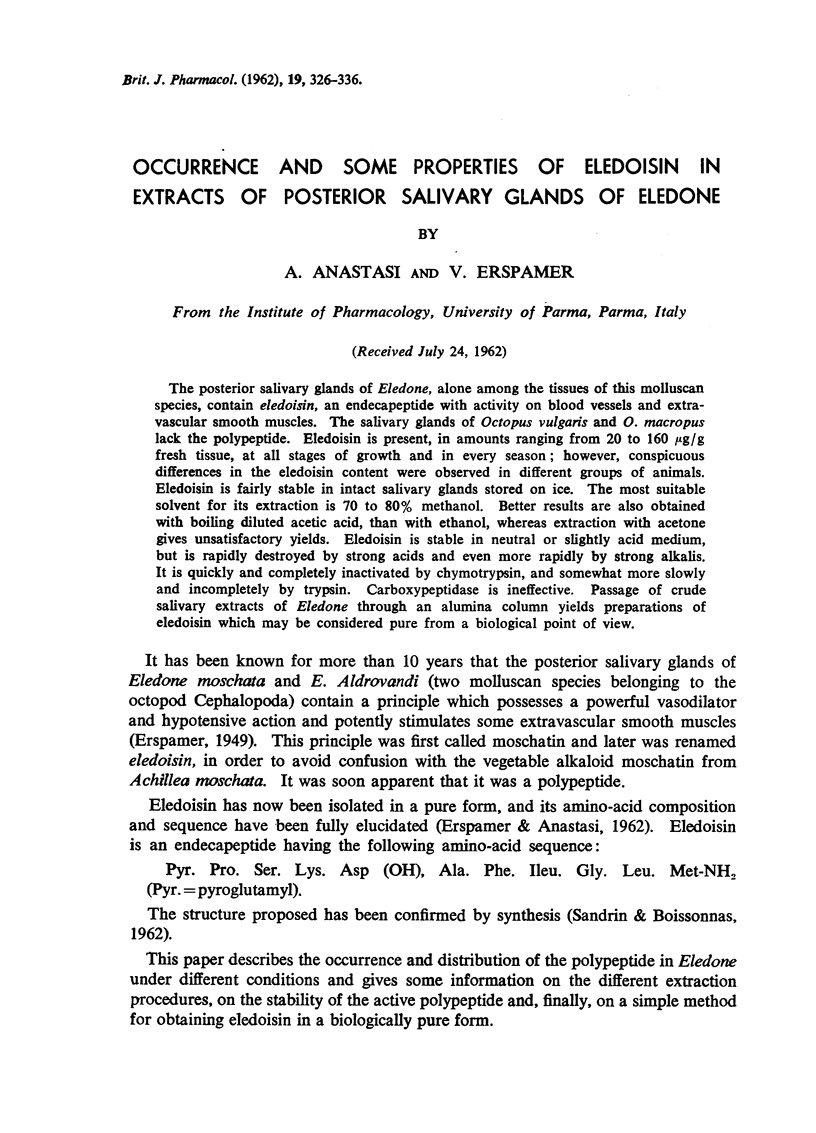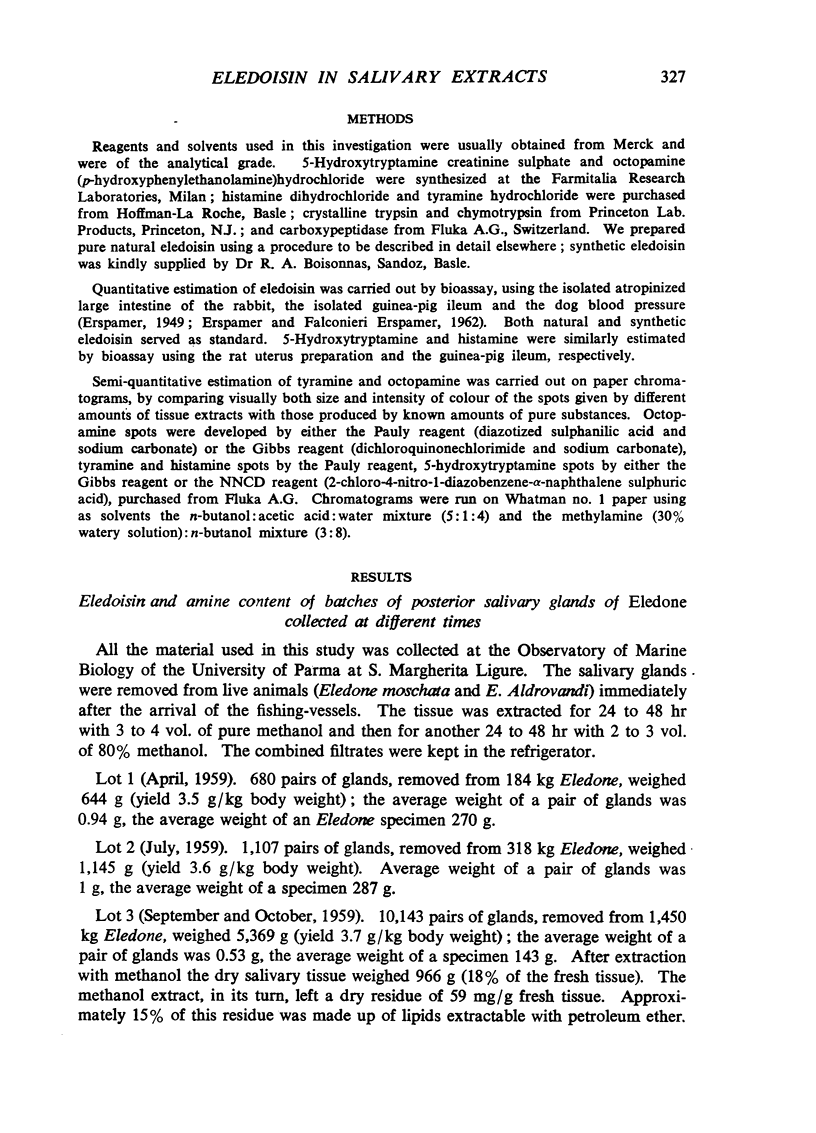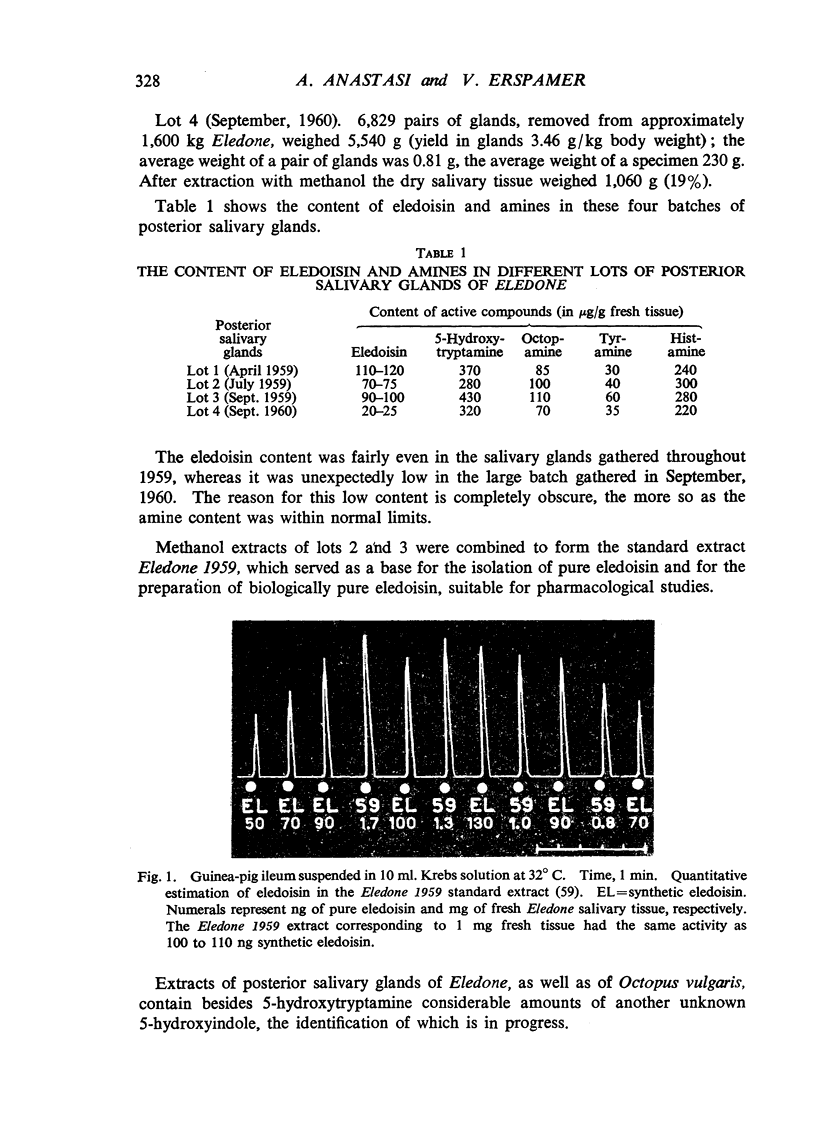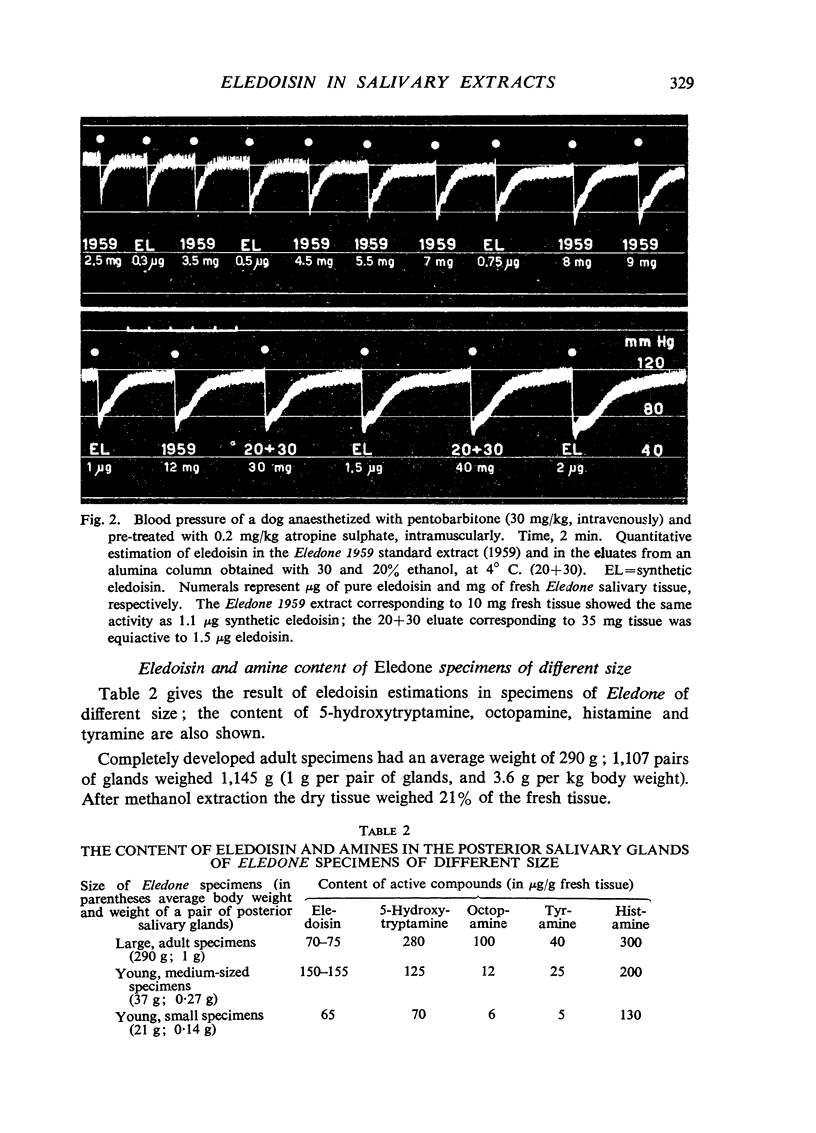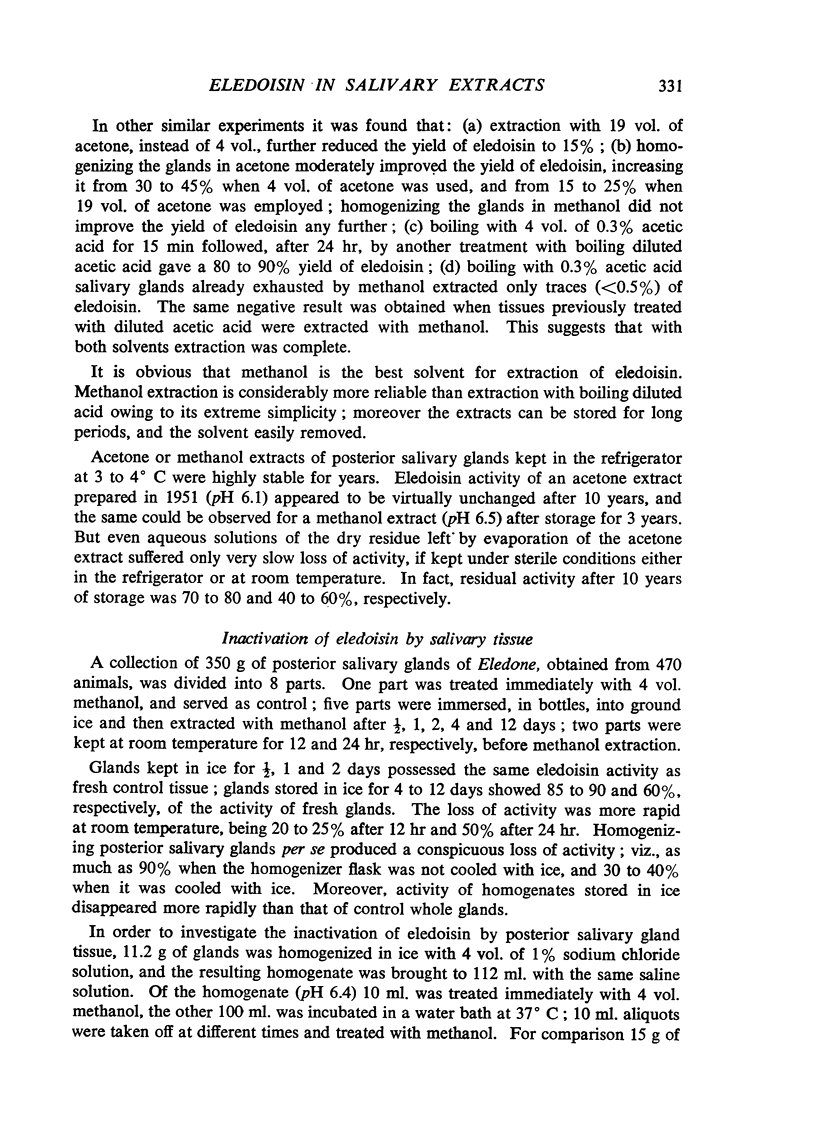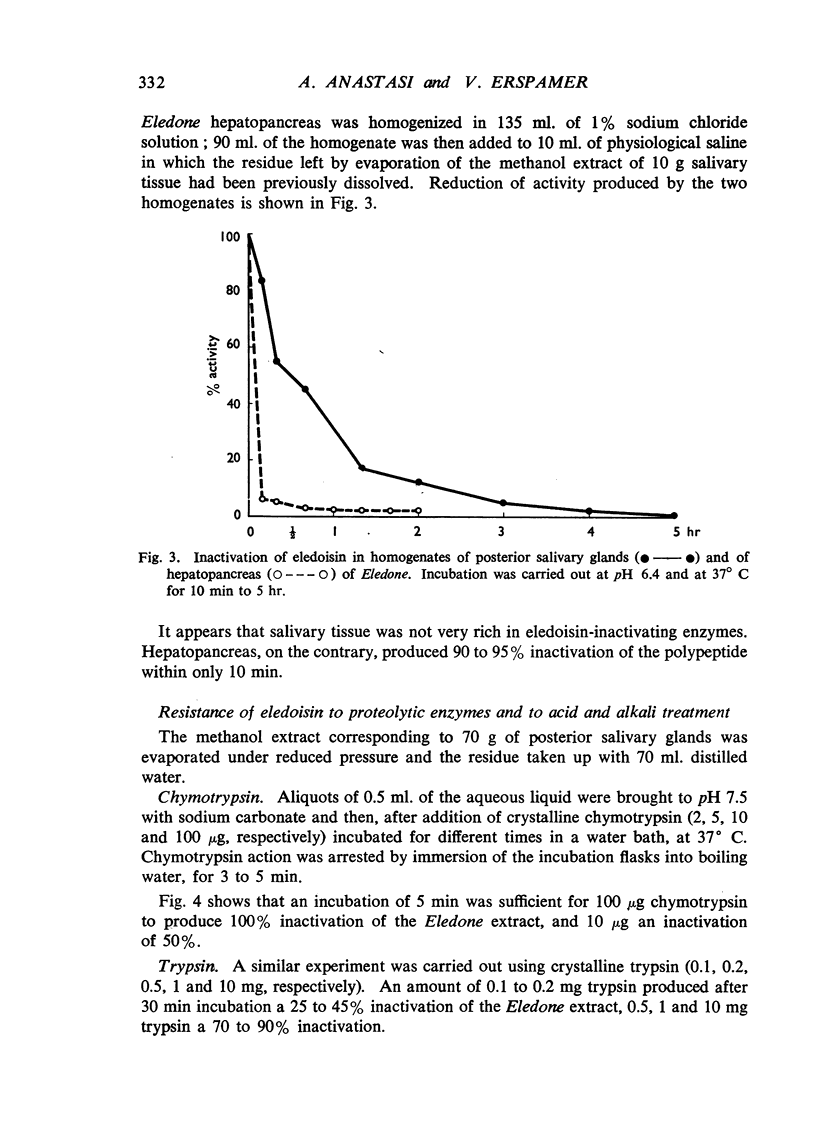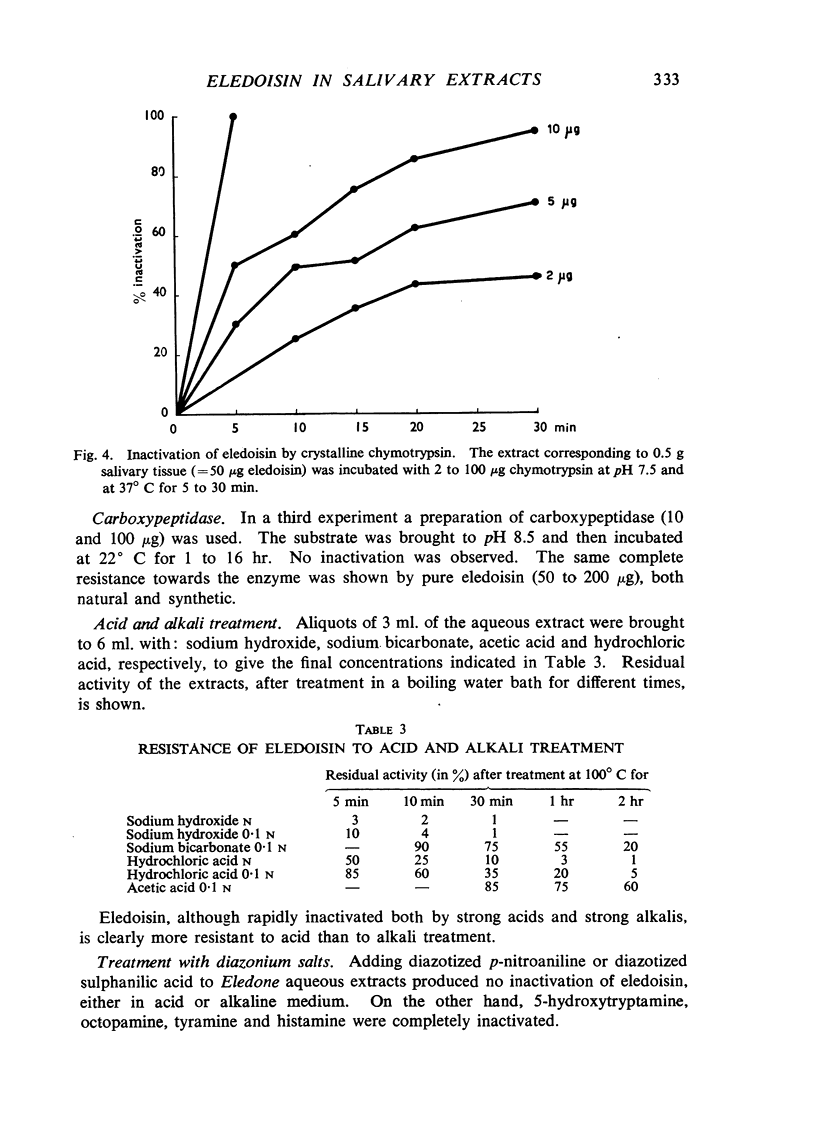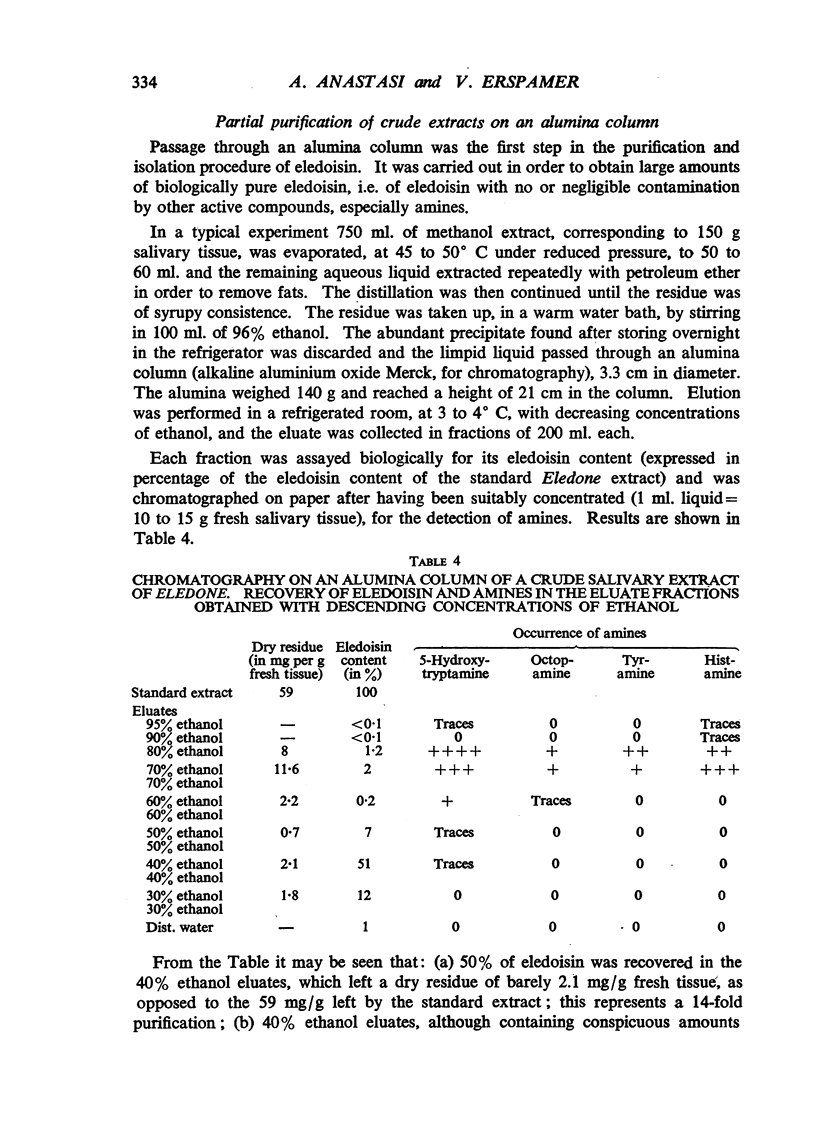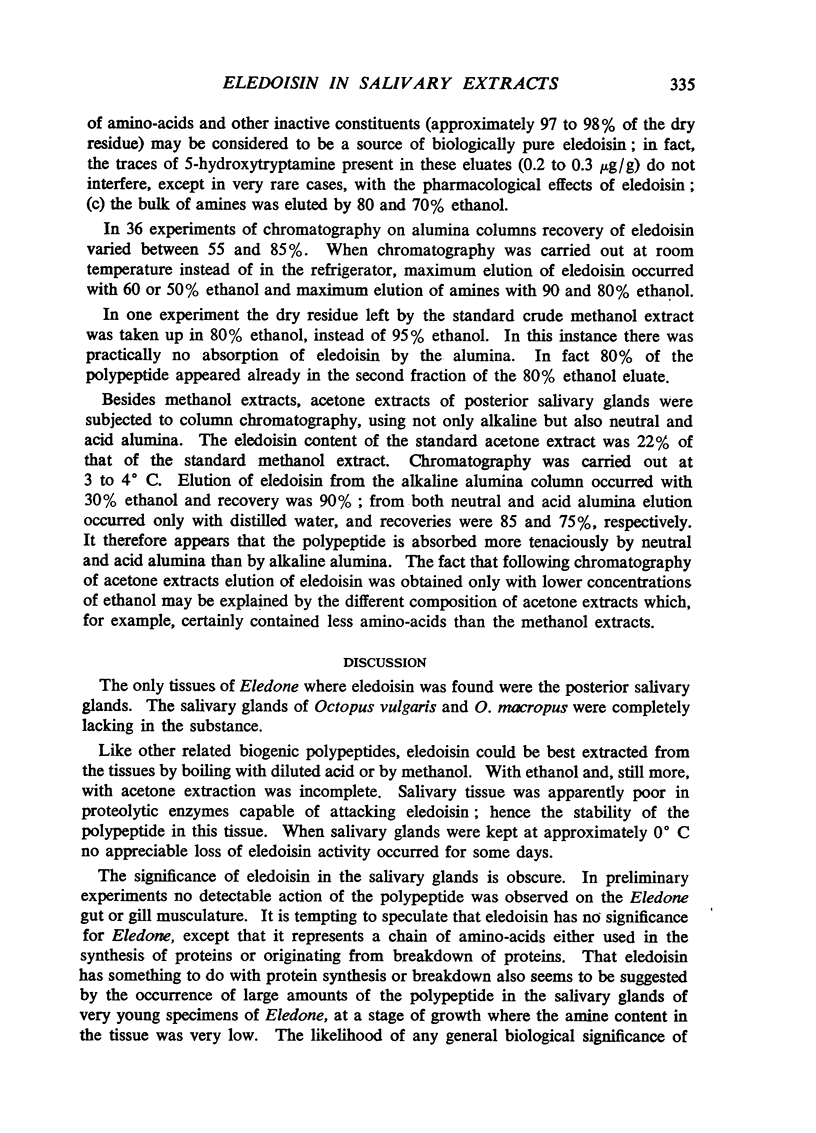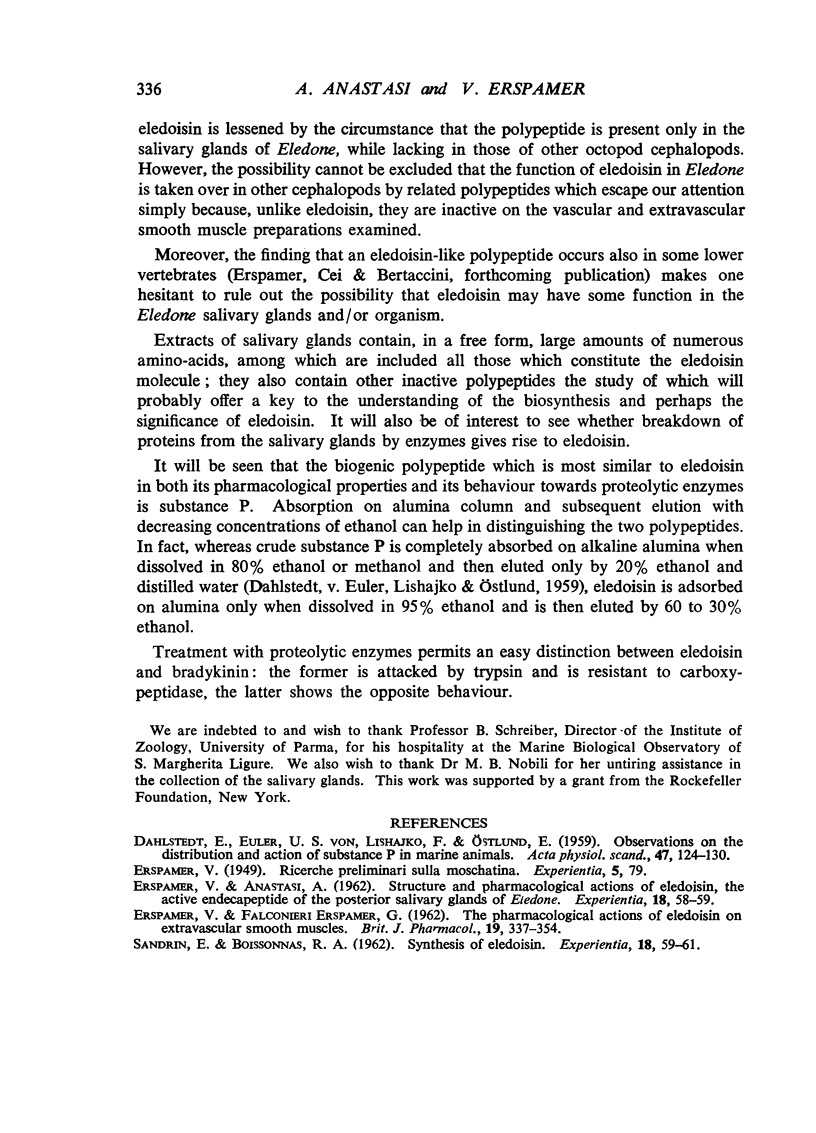Abstract
The posterior salivary glands of Eledone, alone among the tissues of this molluscan species, contain eledoisin, an endecapeptide with activity on blood vessels and extravascular smooth muscles. The salivary glands of Octopus vulgaris and O. macropus lack the polypeptide. Eledoisin is present, in amounts ranging from 20 to 160 μg/g fresh tissue, at all stages of growth and in every season; however, conspicuous differences in the eledoisin content were observed in different groups of animals. Eledoisin is fairly stable in intact salivary glands stored on ice. The most suitable solvent for its extraction is 70 to 80% methanol. Better results are also obtained with boiling diluted acetic acid, than with ethanol, whereas extraction with acetone gives unsatisfactory yields. Eledoisin is stable in neutral or slightly acid medium, but is rapidly destroyed by strong acids and even more rapidly by strong alkalis. It is quickly and completely inactivated by chymotrypsin, and somewhat more slowly and incompletely by trypsin. Carboxypeptidase is ineffective. Passage of crude salivary extracts of Eledone through an alumina column yields preparations of eledoisin which may be considered pure from a biological point of view.
Full text
PDF